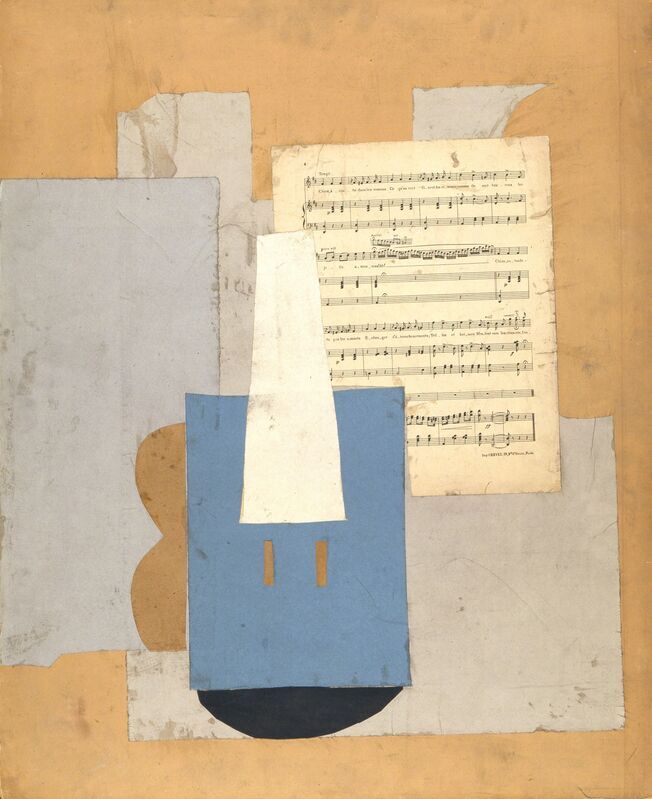Violin and Sheet Music, 1912 by Pablo Picasso
After the momentous invention of the collage, which permitted the use of all manner of materials, Braque and Picasso began working with pasted paper. They cut up, glued, and assembled anything that came to hand: newspaper, wallpaper, music paper. The shapes of the cut-outs are always simple, more often than not rectangular. Their use is critical to the evolution of Cubism. It allowed colour to be reintroduced in order to suggest a certain depth by superimposing different planes. It answered a profound need to explode the accepted canons of art in order to appropriate the concrete realities of an industrialized world.
The use of pasted paper can be divided into three distinct phases. The first, to which Violin and Sheet Music belongs, employs a framework, either painted or drawn, which sets up a dialogue with the pasted pieces of newspaper, coloured paper or, as in this case, sheet music. The second period, between February 1913 and the early spring of that year, saw the use of the real object as a form of expression, clearing the way for what was to be called synthetic Cubism. In the third period, between March 1914 and the beginning of summer Picasso experimented with the effect of materials. In the future he was only to use pasted paper in a purely chance fashion.





















